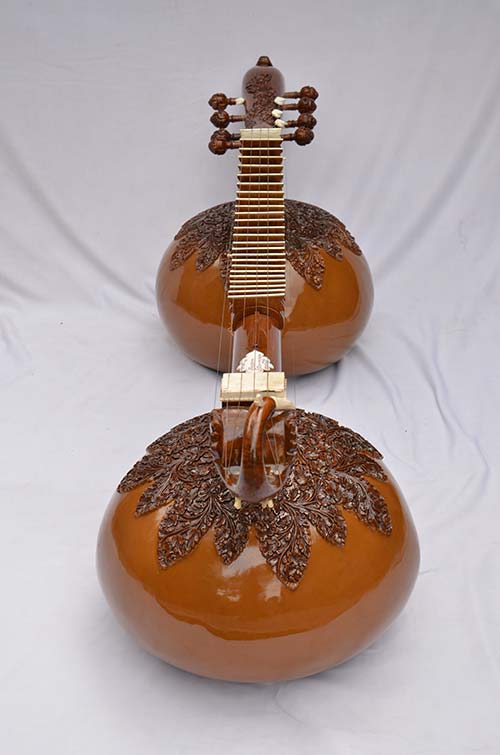The world famous Miraj school of string instrument makers is going to complete 171 years.The City of Miraj is famous for its string musical instruments and music. The goddess of music has spread her blessings over this town. Miraj has been a birth place of many famouse singers and musicians for centuries. Pundit Vishnu Digambar,whoes great Guru, Pundit Balkrishnabuva was a musician of the Miraj Royal court.
In 1850, the first string musical instrument of Maharashtra came to existance after many difficulties faced by its makers. The father of this first maharashtrian musical instrument was Shri. Faridsaheb Shilklgar and his brother Shri Mohinuddin saheb Shikalgar. The Shikalgar brothers faced a lot of difficulties and tensions while making the instrument. Before the production of musical instruments in Miraj; the maharashtrian musicians used the instruments like- Tambora, Sitar, Been, Dilruba, Taus; which were made in North Indian cities like Jaipur, Banaras and Lakhknow. At this time in Maharashtra, wooden instruments like ' Ektari' sursote etc. were made . Because of the low cost and less hard work, the singers used the wooden musical instruments like 'sursote'. Very rare singers used the Tambora which was very costly and demanded hard work in its making.
Know MoreRudra veena (also spelled Rudra vina, and also called Bīn in North India), is a stick zither, a large plucked string instrument originating from the Indian subcontinent and used in Hindustani classical music. It is one of the major types of veena played in Indian classical music.
It has a long tubular body made of wood or bamboo with a length between 54 and 62 inches. Two large, round resonators, made of dried and hollowed gourds, are attached under the tube. Twenty-four brass-fitted raised wooden frets are fixed on the tube with the help of wax. There are 4 main strings and 3 chikari strings.
As Rudra is a name for the Hindu god Shiva, rudra vina literally means "the veena dear to Shiva". Shiva is also said to have created the Rudra Veena, inspired by his wife, Parvati. Also, Ravana is said to have invented RudraVeena inspired as he was with his devotion to Lord Shiva, he named the instrument Rudra Veena - Rudra is the vedic deity Siva.
It is an ancient instrument rarely played today. The rudra veena declined in popularity in part due to the introduction in the early 19th century of the surbahar, which allowed sitarists to more easily present the alap sections of slow dhrupad-style ragas. In the 20th century, Zia Mohiuddin Dagar modified and redesigned the rudra veena to use bigger gourds, a thicker tube (dandi), thicker steel playing strings (0.45-0.47 mm) and closed javari that. This produced a soft and deep sound when plucked without the use of any plectrum (mizrab). The instrument was further modified as the shruti veena by Lalmani Misra to establish Bharat's Shadja Gram and obtain the 22 shrutis.
